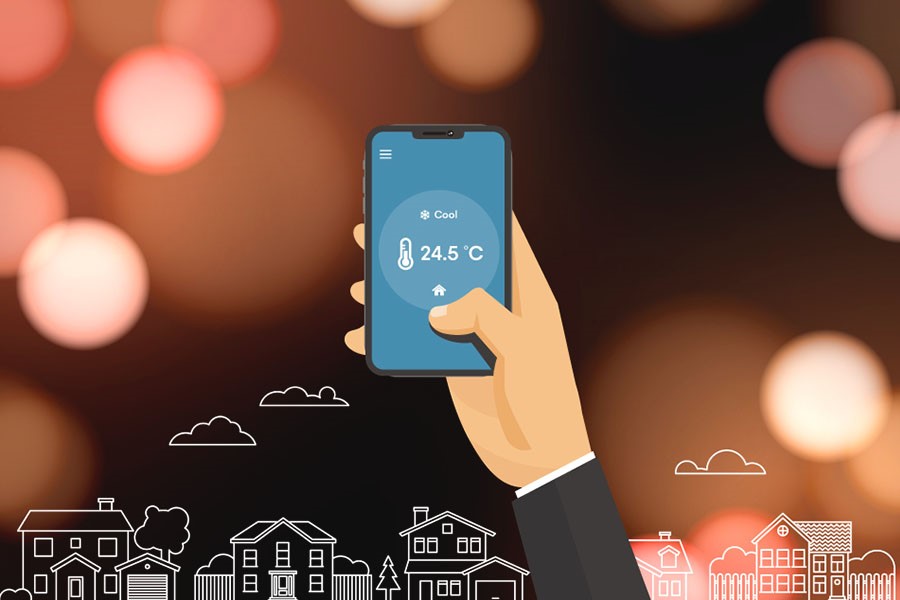Intro: Have you not marvelled at the cool comfort you get when you step barefoot into rural homes with tiled or thatched roofs, and mud-floor. What a contrast these are to urban concrete cubicles. Is it possible to build more houses like that? Where do we begin?
Around 8% of Indian houses have air conditioners (ACs). Fans, air-coolers, open or shaded windows continue to be the best methods to cooling dwellings. Air-conditioners, despite the steady increase in efficiency is not affordable for the vast majority. However, houses can be designed to be much more cooler. Densely populated urban areas tend to become warmer than rural dwellings which are likely to be dispersed, built with earth and biomass, and are often closer to green cover. Building materials can be developed with these features too.
Summer temperatures are much hotter in India, Asia and Europe. Each year past high temperature records are broken. It is essential to provide cooling for houses in dense cities, as well as rural areas in order to adapt to climate change.
India’s tropical humid climate, the increase in population with a faster growth in the middle class with higher disposable income, has pushed up the demand for cooling in buildings. A major share of cooling demand is attributable to buildings, and this can only be managed through step by step improvements in air-conditioners.
The Government of India launched the India Cooling Action Plan (ICAP) on March 2019. The ICAP sets targets to reduce the cooling energy demand, as well as harmful refrigerants by up to two-thirds of the levels between 2017-18 to 2037-38. The stock of air-conditioners of all types today are about 70 million TR (Tonne of Refrigeration). Within a decade this could increase three-times, and go up by ten times in the next two decades. Air-conditioners used in houses would account for 80-90 per cent of the total.
Sharp rise in air-conditioners will impact the environment. Drawing power for ACs could mean disrupting power for poorer colonies, where fans and coolers could provide basic comfort to a much larger number of homes. ACs pump out hot air while cooling. In dense urban areas, the so-called concrete jungles, this adds to the accumulated heat.
Building houses for the urban poor which are naturally cooled is essential so that no one gets left behind. The Pradhan Mantri Awas Yojana (PMAY), a housing programme launched by the Government for the poor, in 2015, would build about 12 million affordable houses by 2022. According to Prime Mnister Modi, “PM Awas Yojana is a step towards fulfilment of the vision of Housing for All by 2022”. The Mission is expected to be completed in a short period and spend significant resources. If suitable thermal comfort guidelines that can provide cooling with efficient fans, and natural ventilation, it would help the poor adapt to the steadily warming cities and town.
The government is committed to raising the quality of life of each and every citizen of India, and climate change would impact much more severely on the health and livelihood of the poor. It is accepted that provision of electricity and lighting can improve the performance of school going children by extending the reading and study hours.
Providing people the gift of thermal comfort not only enhances the home environment for sleep and health, it also adds to the productivity and wellbeing. The impact of something like this on half-a-billion people can be a very significant achievement for India in a warming planet.
This blog has been drafted by Principal Advisor, Dr. Koshy Cherial with research inputs from the Buildings and Appliances team
